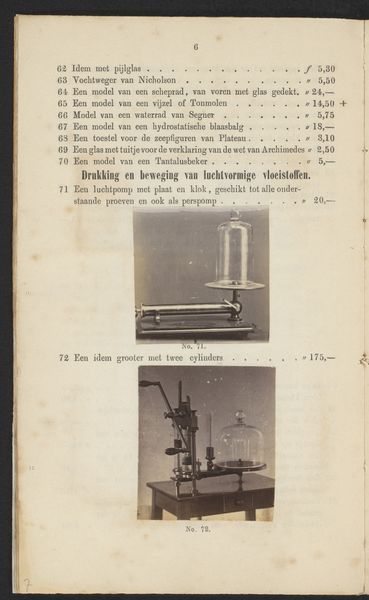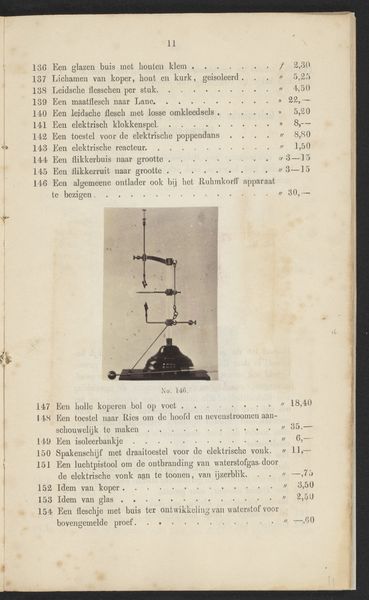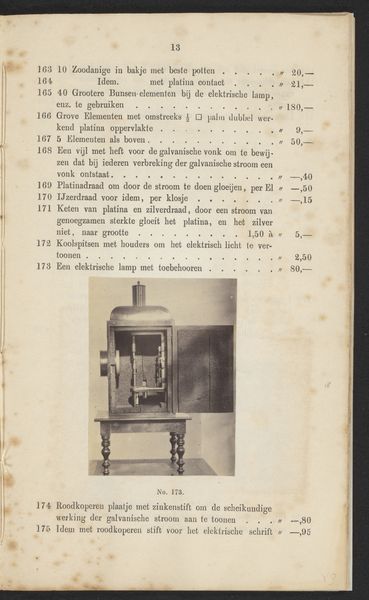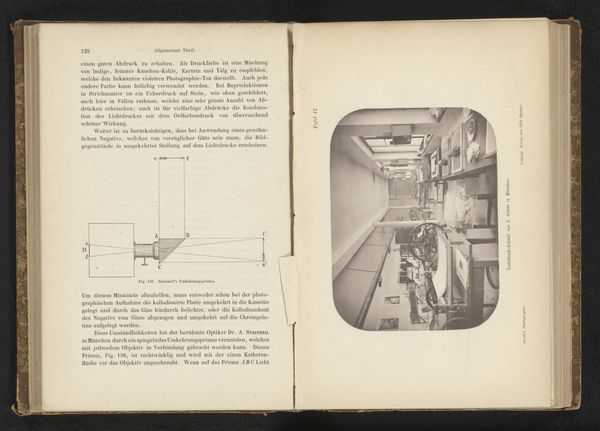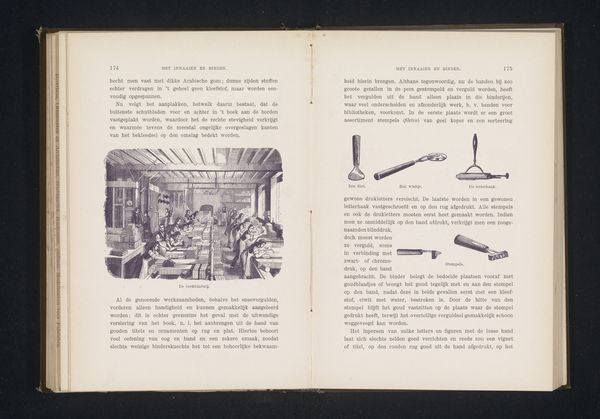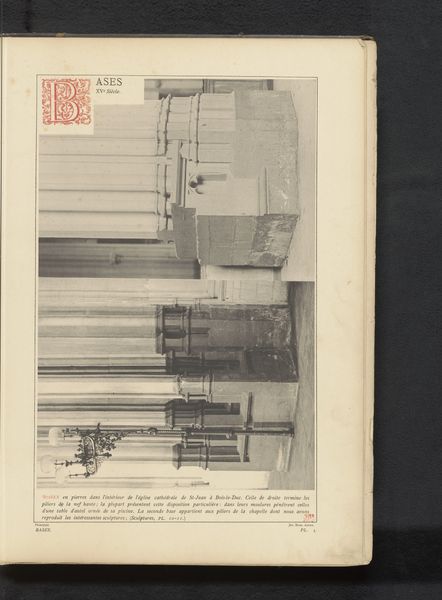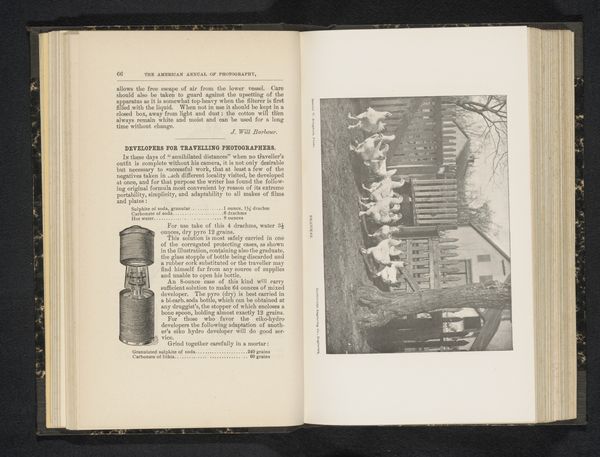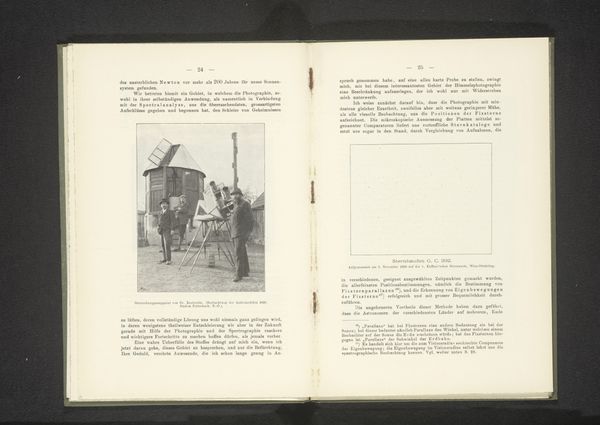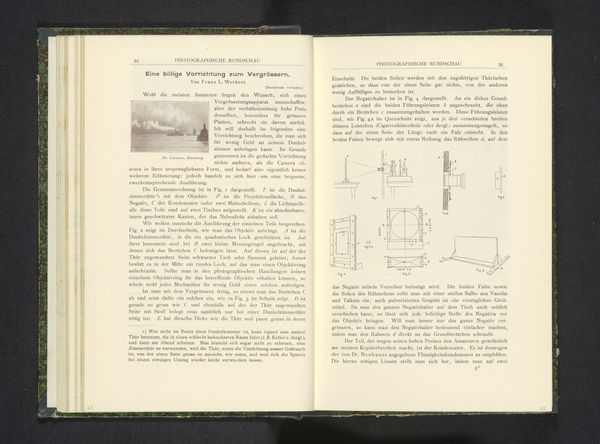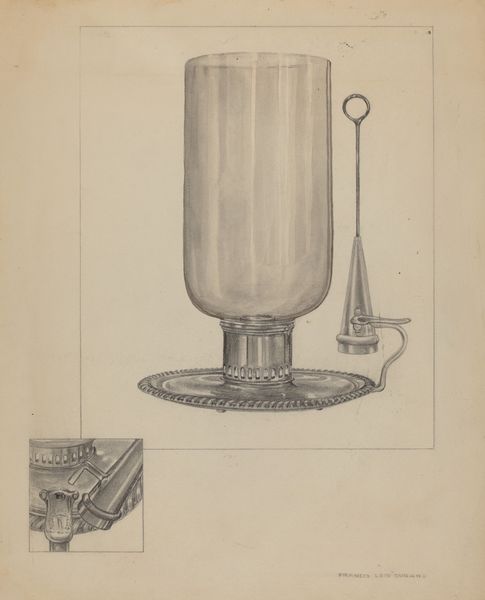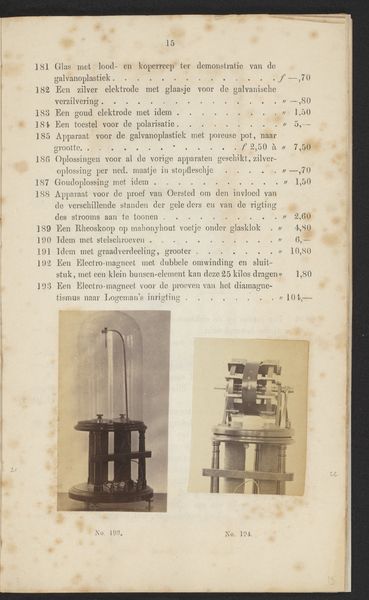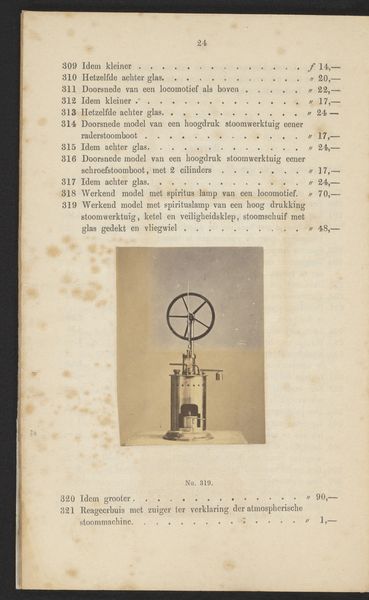
print, photography
photography
Dimensions: height 222 mm, width 133 mm
Copyright: Rijks Museum: Open Domain
Editor: Here we have “Natuurkundige instrumenten,” or "Physics Instruments," by F.W. Funckler, created sometime before 1867. It appears to be a print, potentially from a book, incorporating photographs of various scientific instruments. The overall impression is one of a bygone era, almost like looking into an inventor's notebook. What cultural weight do you think these images carry? Curator: These images resonate with a powerful visual language—one of scientific advancement and burgeoning understanding. Consider the cultural memory embedded in the scientific instrument itself. They are not merely tools, but symbols of enlightenment ideals, progress, and the human quest to unravel the mysteries of the universe. The photographic element then amplifies this, lending an aura of objectivity and truth, hallmarks of the scientific endeavor. Do you see a contrast between the precision of the instruments and the, perhaps, rudimentary methods of image production? Editor: That's a fascinating point about the contrast. It almost makes the quest for objectivity seem even more tangible, more hands-on. The images also remind me of early encyclopedias, with this blend of text and somewhat standardized visual depictions of tools for learning. Curator: Precisely! The ordered arrangement on the page, numbered and captioned, echoes that very ambition to codify knowledge and categorize the world. These instruments themselves are metaphors for observation, experimentation, and ultimately, control over the natural world. This links to the historical and ongoing project of visually defining both the "knower," who uses this technology, and the "known," which the technology uncovers. Does the somewhat staged composition of these instrument photographs contribute to that at all, in your view? Editor: Definitely. The still life aesthetic seems very deliberate and careful, reinforcing the ideal of the objective observer patiently studying the object. I hadn't considered how deeply these symbols of science are embedded in our cultural memory. Curator: Indeed, visual imagery often conceals entire histories. These historical traces allow us to imagine not only this historical image’s audience but the long lineage of cultural continuity.
Comments
No comments
Be the first to comment and join the conversation on the ultimate creative platform.
